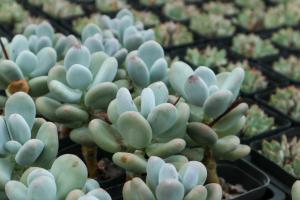Introduction
Rubber tree plants, also known as Ficus elastica, are popular indoor plants due to their attractive appearance and ease of care. However, many plant enthusiasts are unaware that rubber tree plants can be propagated by rooting stem cuttings. In this article, we will discuss how to root a rubber tree plant to expand your indoor plant collection.
Materials Needed
The following materials are required to propagate a rubber plant:
Sharp pruning shears or scissors
A small container, such as a plastic cup or pot
Potting soil
Rooting hormone powder
A clear plastic bag or plastic wrap
Water
Step-by-Step Guide to Rooting a Rubber Tree Plant
Choose a healthy rubber tree plant and select a stem that is at least 6 inches long with several leaves.
Cut the stem using sharp pruning shears or scissors, making sure to cut at a 45-degree angle. The cutting should be about 4-6 inches long.
Remove the bottom leaves from the cutting, leaving only a few at the top.
Dip the cut end of the stem into rooting hormone powder, making sure to coat the entire cut surface.
Fill a small container with moist potting soil and make a hole in the center using a pencil or finger.
Insert the cut end of the stem into the hole and pack the soil around it.
Cover the container with a clear plastic bag or plastic wrap to create a humid environment for the cutting.
Place the container in a location with bright, indirect light and maintain a temperature of around 70-75°F.
Check the cutting periodically to ensure that the soil remains moist, but not waterlogged. Mist the leaves with water to maintain humidity if necessary.
After several weeks, gently tug on the stem to check if roots have developed. If resistance is felt, the cutting has successfully rooted.
Remove the plastic bag or wrap and continue to care for the newly rooted rubber tree plant as you would any other indoor plant.
Tips and Precautions
Here are a few things to keep in mind when rooting a rubber tree plant:
Make sure to use sharp pruning shears or scissors to avoid damaging the cutting.
Ensure that the cutting remains moist, but not waterlogged, to prevent rotting.
Take care not to expose the cutting to direct sunlight or temperatures below 60°F.
If you do not have rooting hormone powder, you can skip this step, but it may take longer for the cutting to develop roots.
Remember to be patient, as rooting can take several weeks or even months.
Conclusion
Rooting a rubber tree plant is a simple and rewarding way to expand your indoor plant collection. With the right materials and a little patience, you can successfully propagate a vibrant and attractive rubber tree plant that will thrive in your home.

 how many times do yo...
how many times do yo... how many planted tre...
how many planted tre... how many pine trees ...
how many pine trees ... how many pecan trees...
how many pecan trees... how many plants comp...
how many plants comp... how many plants can ...
how many plants can ... how many plants and ...
how many plants and ... how many pepper plan...
how many pepper plan...































